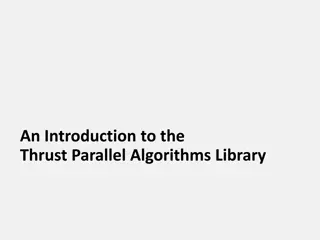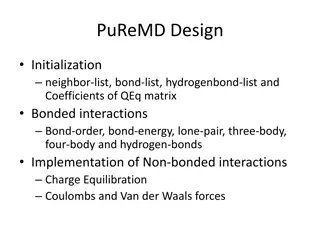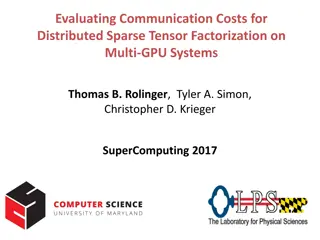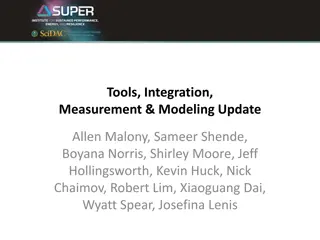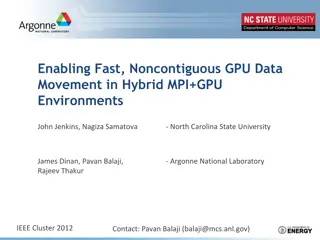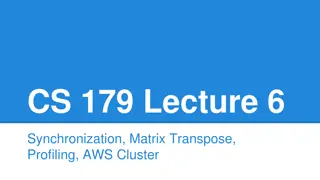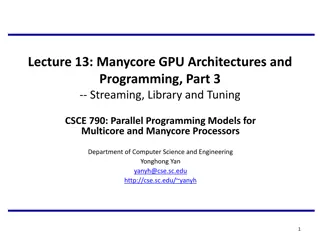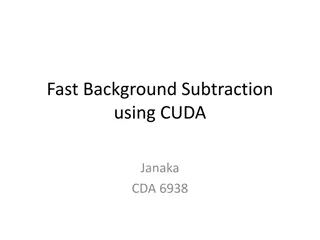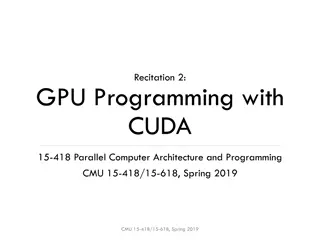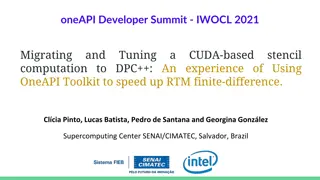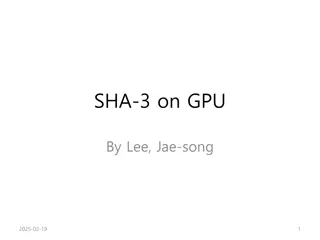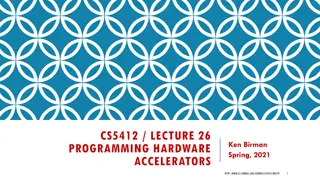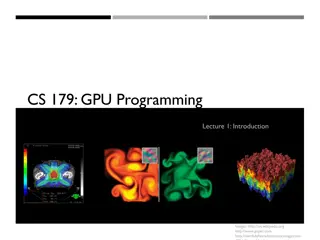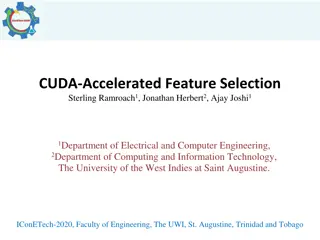
Leveraging Parallelism on GPUs for Enhanced Performance
Explore the utilization of CUDA programming model to exploit parallelism on GPUs for scalable applications, overcoming challenges in hardware parallel systems. Discover the key abstractions and implementations for efficient GPU utilization through examples like Compressed Sparse Matrix and achieve significant speedups in various computational tasks.
Download Presentation

Please find below an Image/Link to download the presentation.
The content on the website is provided AS IS for your information and personal use only. It may not be sold, licensed, or shared on other websites without obtaining consent from the author. If you encounter any issues during the download, it is possible that the publisher has removed the file from their server.
You are allowed to download the files provided on this website for personal or commercial use, subject to the condition that they are used lawfully. All files are the property of their respective owners.
The content on the website is provided AS IS for your information and personal use only. It may not be sold, licensed, or shared on other websites without obtaining consent from the author.
E N D
Presentation Transcript
Exploiting Parallelism on GPUs SE-JOON CHUNG
Background and Key Challenges The trend in computing hardware is parallel systems. It is challenging for programmers is to develop applications that transparently scales its parallelism to leverage the increasing number of processor cores. CUDA is a programming model which facilitates development of scalable parallel programs for data parallel applications.
Graphics Processing Unit Overview GPUs consist of many multithreaded SIMD processors that have many lanes per processor. GPUs rely on extensive multithreading of threads of SIMD instructions to hide the long latency to DRAM. Therefore, they have large number of registers to hold the state of many threads of SIMD instructions.
CUDAs Key Abstractions Providing a hierarchy of thread groups for better scalability Shared memories between threads in the same block Barrier synchronization between threads in the same block
Argument for CUDA Examples of CUDA programs that were able to achieve 50-250 times speedup: MRI reconstruction, molecular dynamics, n-body simulation Ease of programming for programmers
Further Improving CUDA Performance Tiling can be used to reduce global memory accesses by improving locality of data
Further Improving CUDA Performance C(1,1) = * A(1,1) B(1,1)
Further Improving CUDA Performance C(1,1) = * A(1,2) B(2,1)
Further Improving CUDA Performance C(1,1) = * A(1,3) B(3,1)
Further Improving CUDA Performance We can also unroll smaller inner loops to reduce test/branch.
Benefits of CUDA Coarse-grained thread blocks map naturally to separate processor cores and fine-grained threads map to multiple-thread contexts making it easy to scale with increasing parallel resources in system. It is easy to transform serial programs into parallel CUDA programs by transforming loop operations into kernels. Having very fast shared memory between threads in a block can provide substantial performance improvements by being used as software-managed cache.
Restrictions of CUDA Threads and thread blocks may not be created within a parallel kernel due to simple hardware scheduler. Thread blocks must be able to run independently and no communication is allowed. In order to combine results from multiple blocks, a second kernel must be launched. Recursive function calls are not allowed in CUDA kernels due to limited per-thread resource (there can be thousands of threads executing at one time). CUDA programs must explicitly copy data and results between CPU and GPU to support a heterogeneous system architecture.
Conclusions CUDA provides an easy-to-program model for parallel applications. Unlike their argument that CUDA abstractions are general and can extend to any parallel systems, many benefits such as shared memory is specific to NVIDIA s GPU architecture. Other parallel programming libraries such as OpenMP or Intel s C++ Threading Building Blocks provide similar features for multicore CPUs. Their examples do not show how they harness the benefits of CPU- GPU heterogeneous system. CUDA makes it easier to program data parallel applications, but it doesn t necessarily guide the programmer in choosing the right grid and block sizes.

